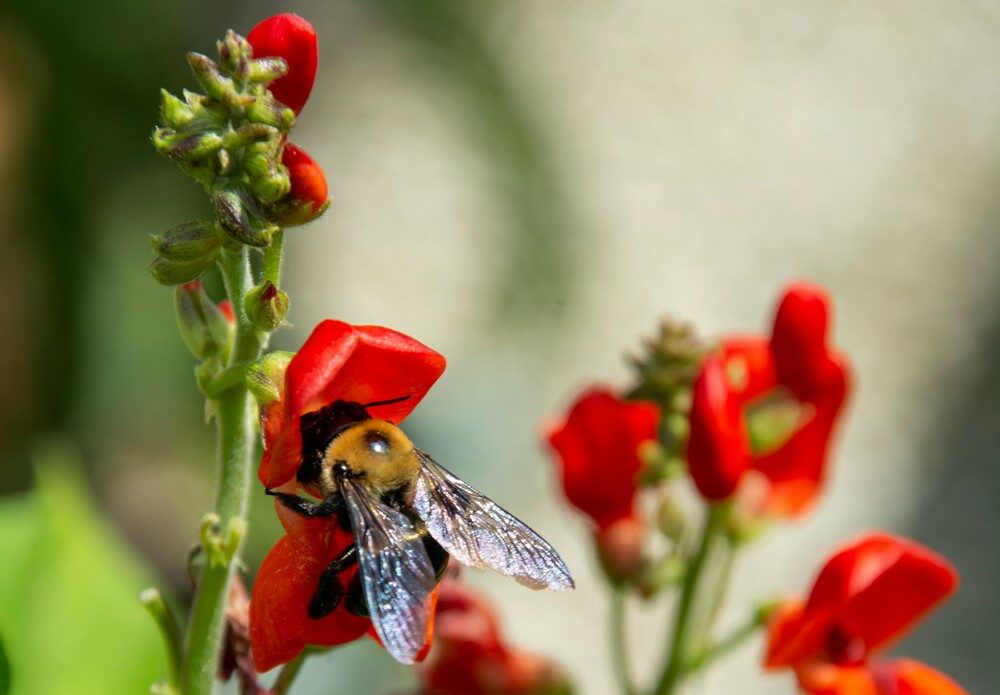Carpenter bees: Friends or foes?

JACKSONVILLE, Ill. — Bees are a welcome site in our gardens. Without the help of bees (and other pollinators) pollinating many of our plants, we wouldn’t be able to enjoy the myriad of flowers, fruits, and vegetables we have in our landscapes.
Despite all their benefits, one bee species may not always be a welcome sight, particularly around decks and eaves, carpenter bees.
Is it a carpenter bee or a bumble bee?
Eastern carpenter bees (Xylocopa virginica) are often confused for bumble bees because they are similar in size (3/4 to 7/8 inch) and appearance. However, carpenter bees have bare, shiny abdomens while bumble bees’ abdomens are hairy.
In addition to their appearance, carpenter and bumble bees’ nests also differ. Bumble bees are social insects that build their nests in existing cavities, often in the ground. Meanwhile, carpenter bees are typically solitary and build their nests above ground in wood.
Eastern carpenter bee life cycle
Carpenter bees will over winter in tunnels as young adults. They will emerge and mate in the spring. Afterward, the females will either enlarge existing tunnels or begin to build new tunnels. If a female starts constructing a new tunnel, she chews a nearly perfect circle about ½ inch in diameter. She will tunnel straight into the wood before making a 90-degree turn and burrowing with the grain of the wood.
Females will lay eggs in the tunnels, and each egg will be sealed off into individual chambers using a mixture of wood pulp and saliva. The eggs will hatch, and the larvae will feed and pupate; new adults will emerge in August or September. They will feed and then go back into the tunnels to overwinter.
What’s the problem?
Carpenter bees get a bad name because they build their nests in wood, often in outdoor wood structures such as decks or the eaves of homes. They prefer soft woods like pine, fir, redwood, and cedar. Unlike termites, they do not feed on the wood, they are simply excavating it to create a nest.
Typically, carpenter bee holes don’t cause serious damage; it is primarily cosmetic. Occasionally, if the tunnels get large enough (used for several years), or if multiple nests are built in the same piece of wood (over several years), it may compromise the integrity of the wood, and it will need to be replaced.
What can I do to manage carpenter bees?
Before carpenter bees become a problem, you can deter nesting by painting or varnishing exposed wood. Carpenter bees find painted surfaces less attractive than raw wood. If wood has been damaged, it can be replaced with painted wood or a non-wood substitute (composite, vinyl, aluminum, etc.).
If you feel you need to get rid of existing carpenter bees, insecticides can be used. The best time to treat is in the spring when bees are first being observed. Individual tunnel openings can be treated with an insecticidal spray or dust. Make sure to read and follow all label directions. A week or so after treatment, the holes should be plugged and painted to prevent them from being used again.
Miss Clipping Out Stories to Save for Later?
Click the Purchase Story button below to order a print of this story. We will print it for you on matte photo paper to keep forever.

